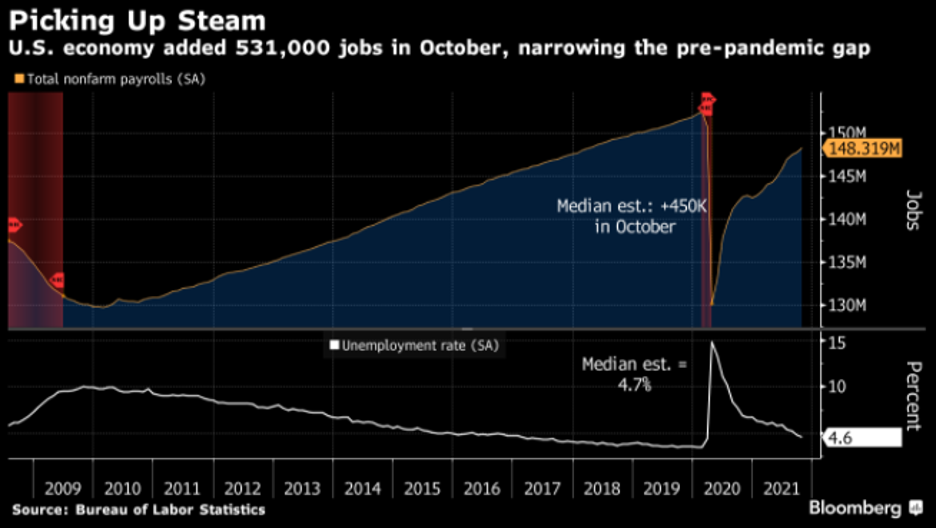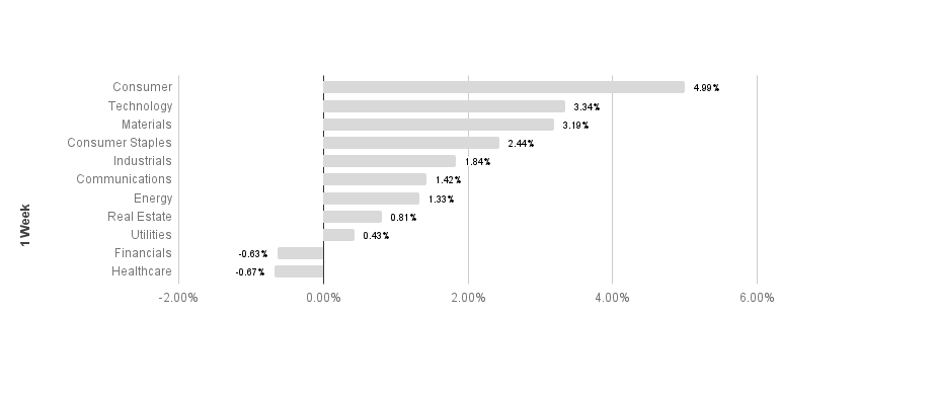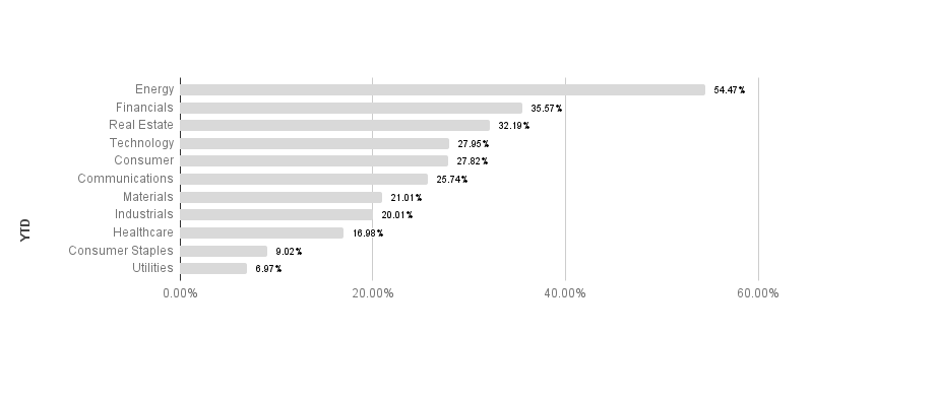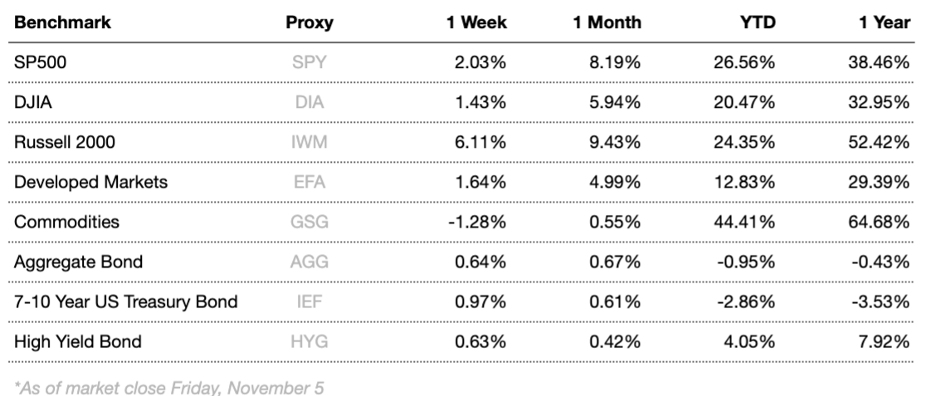Equity markets were positive this week as hiring and PMI numbers beat expectations. Nonfarm hiring numbers were especially encouraging, as business have reported difficulty finding workers. The Fed outlined the beginning of its tapering process, which will conclude by summer 2022. While the economic recovery continues its long slog toward recovery, residual effects of the pandemic lockdowns continue to plague the global economy, as severe shortages of everything from microprocessors to natural gas persist. Supply chains remain the number one obstacle for a more robust recovery, and they have struggled to get back on track in spite of progress against COVID-19. Overall, markets have performed well YTD, but headwinds continue to fiercely resist further progress.
Overseas, developed markets outperformed emerging markets, with emerging markets returning negative performance. European indices were positive, while Japanese markets also returned positive performance for the week. Improving prospects against the pandemic as well as improved prospects for economic recovery should continue to help lift markets globally over time, but macroeconomic factors such as inflation and supply shortages threaten markets everywhere.
Equity markets were mostly positive this week as investors continue to assess the state of the global economy. While fears concerning global stability and health overall appear to be in decline, the recent volatility serves as a great reminder of why it is so important to remain committed to a long-term plan and maintain a well-diversified portfolio. When stocks were struggling to gain traction last month, other asset classes such as gold, REITs, and US Treasury bonds proved to be more stable. flashy news headlines can make it tempting to make knee-jerk decisions, but sticking to a strategy and maintaining a portfolio consistent with your goals and risk tolerance can lead to smoother returns and a better probability for long-term success.
Chart of the Week

The labor market is slowly returning to form, as businesses continue to hire and workers are returning to the workplace. A firm month of hiring in October has helped get the labor market back on track towards normalcy.
Market Update
Equities
Broad market equity indices finished the week positive, with major large cap indices underperforming small cap. Economic data has been mostly encouraging, but the global recovery has a long way to go to recover from COVID-19 lockdowns.
S&P sectors were mostly positive this week. Consumer discretionary and technology outperformed, returning 4.99% and 3.34% respectively. Financials and healthcare underperformed, posting -0.63% and -0.67% respectively. Energy has the lead in 2021 with a 54.47% return.


Commodities
Oil fell slightly this week as crude oil inventories rose. Energy markets have been highly volatile in the COVID era, but it appears that higher oil prices may be more of the norm given recent market fundamentals. Demand is down compared to early 2020, but as global economies are continuing to improve, oil consumption is recovering rapidly. On the supply side, operating oil rigs are still well under early 2020 numbers, but trending upwards. In addition to supply and demand, a volatile dollar is likely to have a large impact on commodity prices.
A new dimension of shortages has emerged recently in energy markets. China recently has been unable to produce the energy needed to keep its power grid running without interruption. Additionally, Europe and other regions have not been able to acquire enough supply of natural gas to meet anticipated heating needs for winter. Many analysts are anticipating natural gas prices to rise substantially as countries desperately try to fill shortfalls before the weather turns too cold, and that manufacturing operations in China could remain under strain for some time.
Gold rose this week even as the U.S. dollar strengthened. Gold is a common “safe haven” asset, typically rising during times of market stress. Focus for gold has shifted again to include not just global macroeconomics surrounding COVID-19 damage and recovery efforts, but also inflation and its possible impact on U.S. dollar value.
Bonds
Yields on 10-year Treasuries fell this week from 1.5521 to 1.4513 while traditional bond indices rose. Treasury yield movements reflect general risk outlook, and tend to track overall investor sentiment. Expected increases in future inflation risk have helped elevate yields since pandemic era lows in rates. Treasury yields will continue to be a focus as analysts watch for signs of changing market conditions.
High-yield bonds rose this week as spreads tightened. High-yield bonds are likely to have stabilized for the short term as the Fed has adopted a remarkably accommodative monetary stance and major economic risk factors subside, likely helping stabilize volatility.
A headwind could be on the horizon for fixed income assets, as the Fed has begun tapering its asset purchases which could raise yields. Tapering will undoubtedly have an impact on yields, but the degree of impact is uncertain.

Lesson to Be Learned
“Opportunities come infrequently. When it rains gold, put out the bucket, not the thimble.”
-Warren Buffett
FormulaFolios has two simple indicators we share that help you see how the economy is doing (we call this the Recession Probability Index, or RPI), as well as if the US Stock Market is strong (bull) or weak (bear).
In a nutshell, we want the RPI to be low on a scale of 1 to 100. For the US Equity Bull/Bear indicator, we want it to read at least 66.67% bullish. When those two things occur, our research shows market performance is typically stronger, with less volatility.
The Recession Probability Index (RPI) has a current reading of 28.07, forecasting a lower potential for an economic contraction (warning of recession risk). The Bull/Bear indicator is currently 100% bullish, meaning the indicator shows there is a slightly higher than average likelihood of stock market increases in the near term (within the next 18 months).

It can be easy to become distracted from our long-term goals and chase returns when markets are volatile and uncertain. It is because of the allure of these distractions that having a plan and remaining disciplined is mission critical for long term success. Focusing on the long-run can help minimize the negative impact emotions can have on your portfolio and increase your chances for success over time.
The Week Ahead
More to come soon. Stay tuned.



